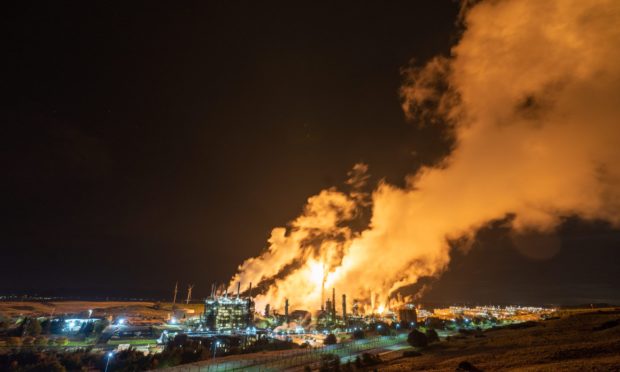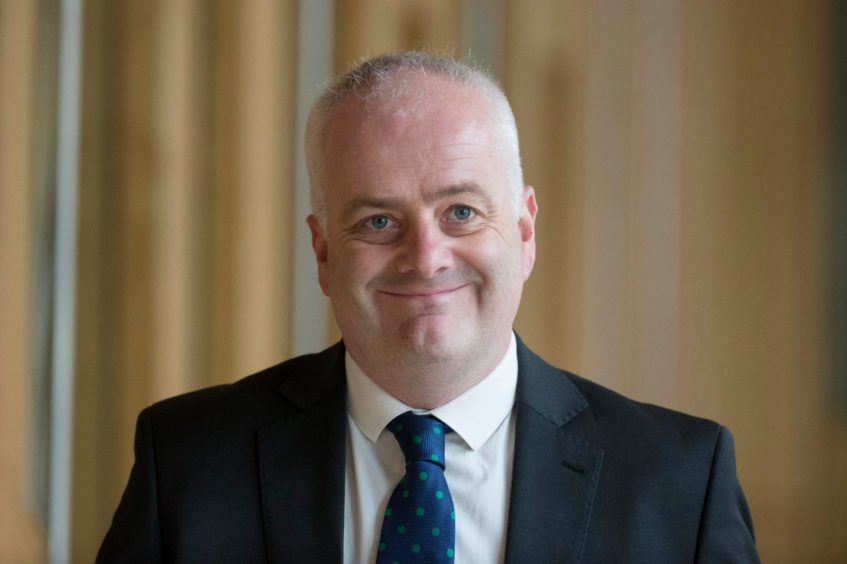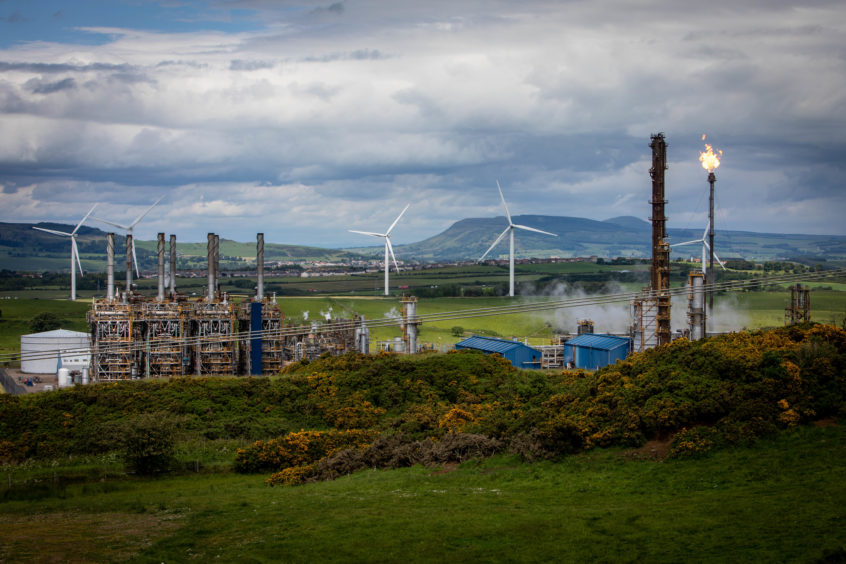The latest flaring episodes at a Fife chemical plant produced the same amount of CO2 emissions as 9,200 people taking return flights between Glasgow and New York, the Scottish Greens have said.
The Scottish Environment Protection Agency (Sepa) confirmed during the most recent three-day flaring period at Mossmorran, between October 4-6, 13,800 tonnes of CO2 was emitted.
Protesters have gathered outside Mossmorran in recent weeks to call for the closure of the plant, which employs around 200 people.
Residents have been left “terrified” by continuous flaring events, which sees huge flames erupt into the sky that are visible as far south as Edinburgh.
The noise generated by the events has been described as that of an “earthquake”.
October’s incident resulted in more than 740 complaints being submitted to Sepa.
Operator ExxonMobil blamed the flare on a faulty part in a compressor and said it had now been replaced.
Excessive CO2 emissions are a proven contributor to climate change.
‘Baffling’
Mid Scotland and Fife Green MSP Mark Ruskell said: “Flaring is distressing and highly disruptive for local residents every time this fossil fuel relic suffers a breakdown, but these figures also now show the catastrophic long-term impacts this is having on our environment.
“Scotland has a legally binding target to achieve net-zero emissions by 2045, so it’s baffling to find out this much carbon is regularly being burned off into our atmosphere with very little consequence for the operators.
“Work is planned to reduce the impacts of flaring, but it’s already been delayed and, as far as I understand, it won’t have a significant impact on reducing carbon emissions.
“The operations of this plant fundamentally rely on the burning of huge quantities of fossil fuels, and we urgently need a plan to decarbonise it, or transition away from fossil fuel industries altogether in Scotland.”
A return flight from Glasgow to New York emits 1.52 tonnes of CO2 per passenger, according to Carbon Footprint’s calculator.

Sepa, in response to a request from Mr Ruskell, said it did not hold “precise composition of the gases flared across the whole event”, as these will vary depending on the exact stage of operation and process conditions.
It added: “However, ExxonMobil have previously provided some typical flare gas compositions and based on these the carbon dioxide emissions could be in the range 2.5 – 3 tes CO2/te of gas flared.
“ExxonMobil reported to us that the total amount of gas flared was 4,600 tes and therefore the amount of CO2 could be in the range 11,500 – 13,800 tes”
Exxon ‘pay for emissions’
An ExxonMobil spokesperson said: “Fife Ethylene Plant (FEP) is committed to minimising CO2 emissions and maximising energy efficiency.
“It is also important to understand that we report and pay for our CO2 emissions under the EU Emissions Trading Scheme (EU ETS), which provides us with added incentive to minimise emissions.
“We have a number of innovations in heat integration, such as using waste heat from our gas turbine to reduce fuel consumption in our furnaces to maximise energy efficiency while cutting energy use and associated CO2 emissions.
“ExxonMobil is pursuing technologies to enhance existing operations and develop alternative energies with a lower carbon intensity including researching breakthroughs that make carbon capture and storage (CCS) technology more economic for power generation and industrial applications, developing process intensification technologies to reduce the energy needs of manufacturing facilities like FEP and progressing advanced biofuels for commercial transport and petrochemicals.”












